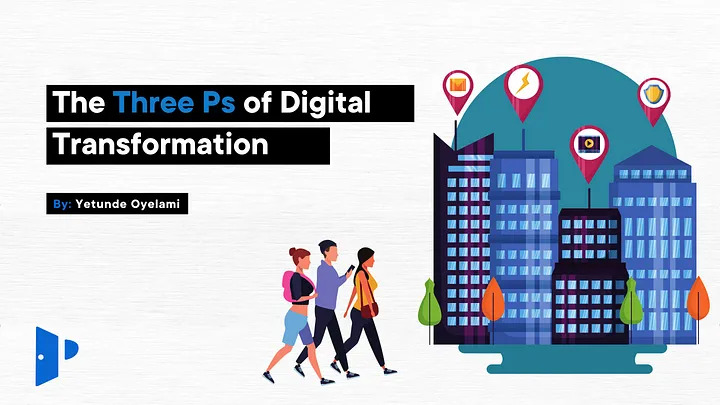Yesterday, we had some clients walk in for digital consultations, and it’s a herald of drama like episodes, especially when it comes to building websites.
“Are you saying I can’t upgrade my business without having a website?”
And then we’re back to the point where we start explaining to Mrs Okeke that it’s essential for her to have a website where her customers can make their orders.
Few can deny that the need for digital transformation is pressing.
It determines your company’s capacity to provide (as well as compete) on customer experience. Many businesses are failing to meet the digital transformation challenge.
How will they be able to correct their course?
We say by simply sticking to the “Three P’s”:
1. People
It’s all about people when it comes to successful digital transformation.
Your employees must change before your organization can digitalize. However, change is difficult. Before they step in and help you transform the organization, many people need to go through a personal risk assessment. They must understand how the changes will impact them.
They are concerned about their ability to perform, and some will wonder if they should start looking for a new job.
You must first determine the role, or roles, that each individual will perform in the process. Who should be invited to participate? Who is in charge here? Who is in order of the transformation? To make digital a new way of life, who needs to collaborate more effectively?
Are you working with the right people who have the proper skill sets? Will you have to hire someone else to help you?
First, address these issues, then clearly define roles. Digital transformation will remain a siloed project unless the right people and alignment are in place.
2. Products
Products are always about experience. What influence will the digital transformation have on your product and the experience it provides? How will your product, and, more crucially, the user experience, evolve as a result of this?
You should concentrate on the technology required to support the type of digital transformation that increases customer experience. While 89% of companies invest in tools and technology to improve customer experience, just a small percentage are using real-time data to make choices.
3. Processes
The course of action is for IT and marketing to work together to promote digital transformation. However, keep in mind that the influence on the customer experience should drive your process decisions.
Digital transformation must occur across the organization, but it does not have to appear simultaneously. Start where it will have the most impact and has the best chance of succeeding — and, often, with the lowest risk to negatively affecting customer experience. Is it only available online? Is it possible to shop both online and physical store? Is it better to focus solely on your country or put shipping plans in place for your international customers? And which part of the company will be transformed first?
Your method may be IT and customer service in tandem with marketing, rather than IT and marketing first.
Create a method that is tailored to your company’s unique needs. It doesn’t have to look like everyone else’s path; it only has to suit your requirements and objectives.
Don’t Stop Moving
Technological innovations such as AIs, e-commerce, websites, mobile applications, email marketing, and social media will fall short if they can’t hyper-personalize the consumer experience and meet them where and when they want to interact. If you follow the three P’s of digital transformation, you’ll be able to successfully transition your company into the digital age and compete on customer experience.
Do you want IT consultation for your brand? Then don’t hesitate to reach out to the ProDevs team. Sign up on Prodevs.io to get started.














